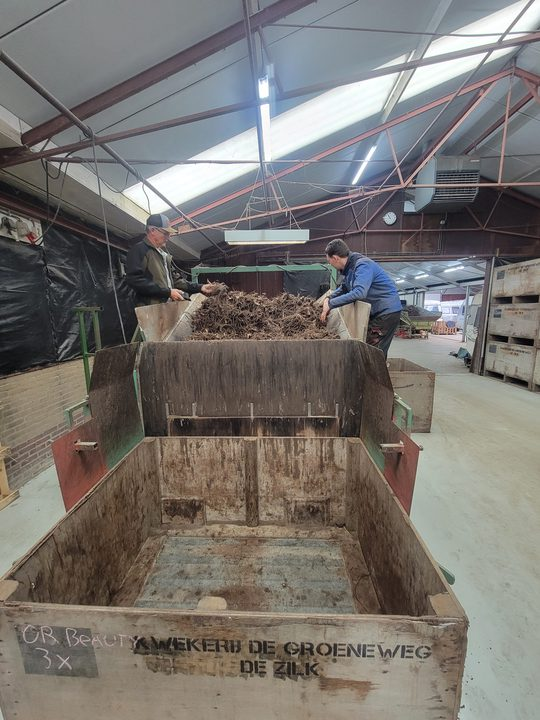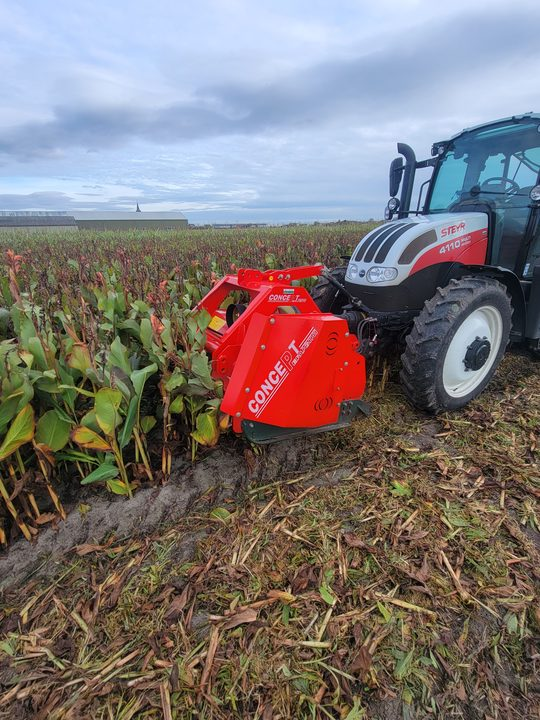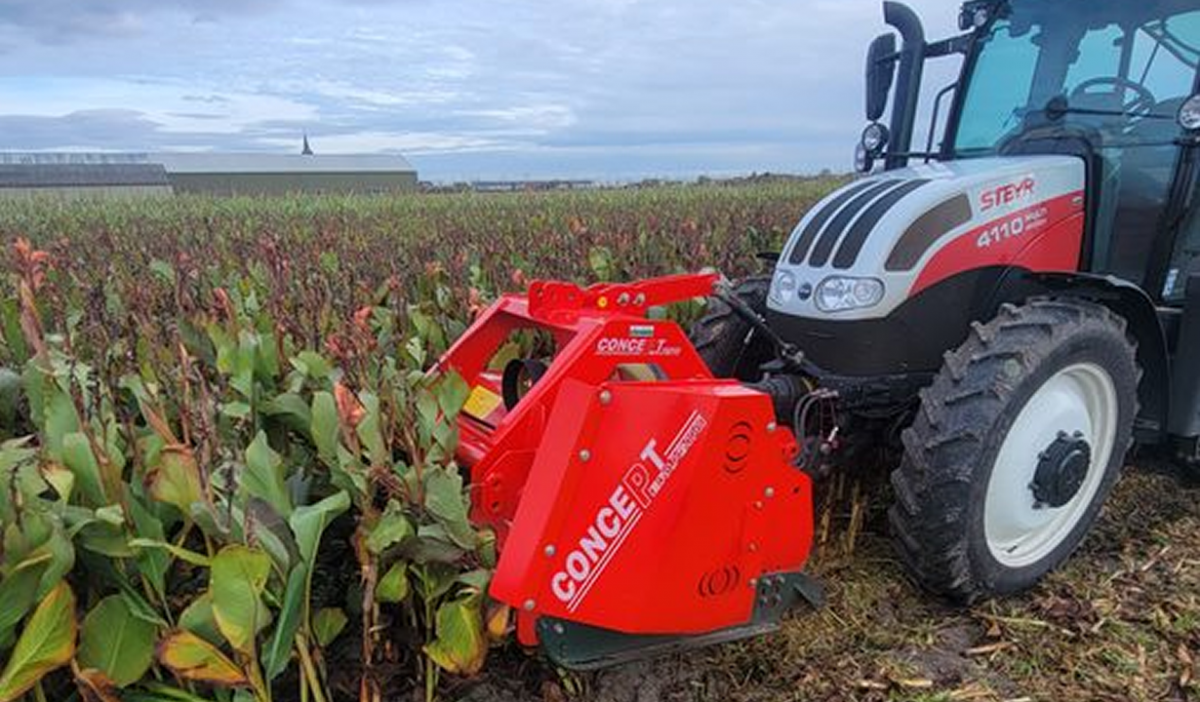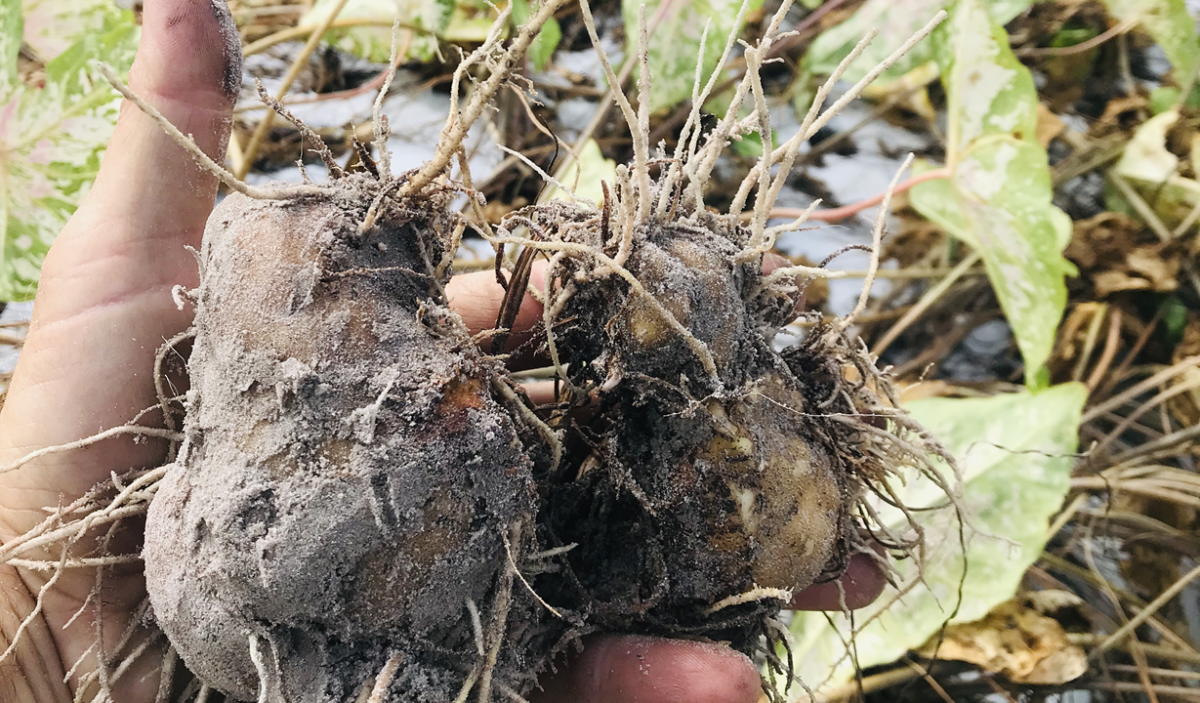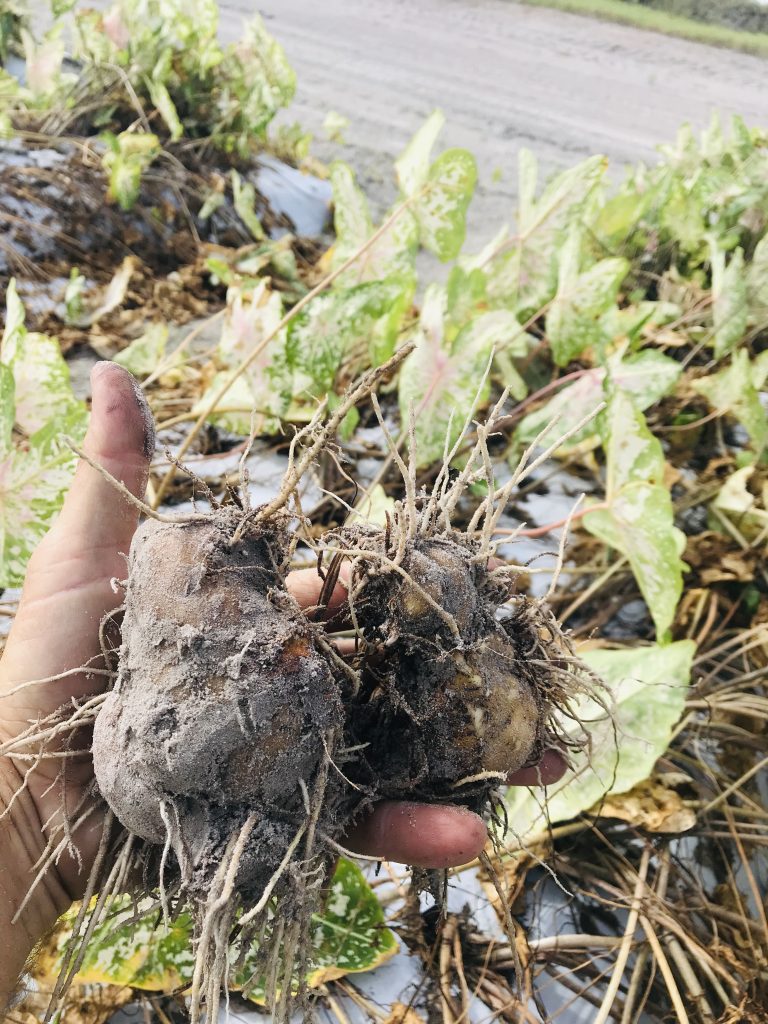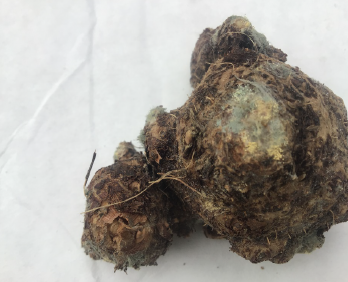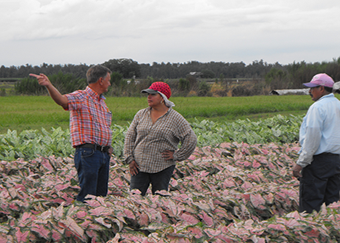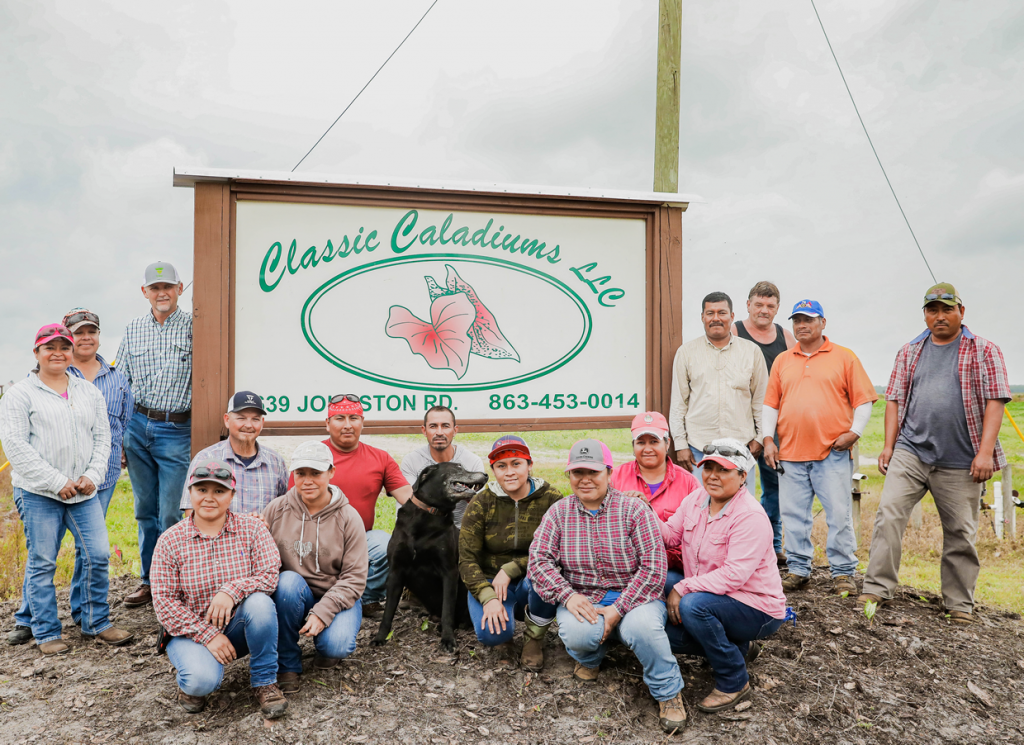During storage, the tops of the caladium tubers cannibalize the base to survive. The longer tubers are stored and the warmer they are stored the more cannibalization (due to increased respiration rates) takes place, increasing the amount of dead basal tissue, until they finally exhaust all their stored reserves and die. The tops only remove from the basal tissue what is needed (water, nutrients, starch/sugar, etc.) to survive, but leave behind dead organic tissue which when hydrated serves as a food source for saprophytic (non-pathogenic) organisms (fungi/bread mold and bacteria). As long as the top portion of the tuber is firm and when scratched there is yellow firm tuber tissue, the tuber will perform. Imagine gluing a slice of bread to the base of the bulb, what would you expect to happed to the slice of bread? It would hydrate, mold and rot.
Tuber storage life is dependent on variety, growing status of the variety when harvested, processing damage and storage conditions.
1) Variety: Certain caladium varieties store better than others. Classic Caladiums is doing ongoing studies on the storage capabilities of each variety.
2) Growing Status when Harvested: To meet market demands harvesting begins before most varieties are naturally dormant. Leaves are mowed off and tubers are harvested which exhibit roots. These “rooty” tubers, though performing normally when planted, tend to store less favorably and shrink more.
3) Processing Damage:
a. Caladium tubers are mechanically harvested with a digger that is similar to a potato digger. Tubers are harvested into live bottom bulb trailers and then taken and unloaded at our washer. Though we do all we can to reduce mechanical injury some injury occurs. Certain varieties are more prone to injury than others as are larger tubers when compared to smaller tubers. Damaged tubers store less well than non-damaged tubers.
b. After washing tubers are cured for 2 weeks, at 85°F with good air flow and circulation, after which they are graded and counted. After counting they are returned to the curing room for 24 hours to allow any new grading related wounds to begin healing, after which the are placed in our warehouse and added to our salable inventory.
4) Storage Conditions: Typically, tubers are stored in the processing warehouse from December through April. Warehouse temperatures during this period run from 65-85°F. Most operations continue to store and ship from the warehouse through July. During the period May-July temperatures often reach 100°F on a daily basis. These high temperatures increase tuber respiration and reduce the life of the tubers. Classic Caladiums is experimenting with long term (9-12 months) tuber storage at 65°F and >50% relative humidity. It appears that many varieties store well under these conditions
More on bulb storage: Click Here
